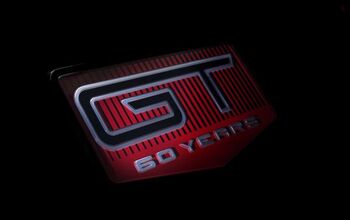2019 Infiniti QX50 Review - Owner of a Lonely Heart

Think of an occasion in which something really good appeared in a place where it was underappreciated. A fantastic steak at the downtown greasy spoon, perhaps? Beautiful new windows installed in a student rental house? My writing on this website? Wait, I wasn’t supposed to say that last one out loud…
Buried in the mire of Ghosngate at Nissan is some nifty new tech that should be turning the car world on its ear. The company’s variable compression engine, displacing an industry-typical 2.0 liters from a turbocharged four pot, is actually about as far from industry-typical as Yugo was from being a class leader in fit and finish. It’s able to vary its compression from 8:1 to 14:1, thus offering the best of power and economy characteristics. It’s been called the “holy grail.”
So where does this engineering marvel and technological triumph first appear? In the company’s sports car? Don’t be silly. It’s under the hood of a grey crossover, of course.
Talk about being underappreciated.
First, a tech lesson for all you boneheads who slept through Tim’s First Drive of this car one year ago and have no idea how a variable compression engine works. If you’re still not interested today, I’ll tell you that magic beans are doing all the work so you can jump down a couple of paragraphs to my driving impressions.
With those losers out of the way, I’ll remind the eggheads in the room that compression is achieved by a piston hammering air up into the top of a cylinder until the piston reaches the top of its stroke. Compression ratio is calculated by comparing the space into which the air is squeezed to the cylinder’s volume. In an engine with a 12:1 compression ratio, for example, the latter has been pressed into an area that’s a dozen time smaller than when the piston is at the bottom of its stroke.
[Get pricing on new and used Infiniti QX50s here!]
High performance scenarios are best handled by a lower compression ratio, while maximum efficiency prefers a high compression ratio. By deploying a multi-link system, the piston’s stroke is altered, which changes the compression ratio. (Technically, it also changes the displacement slightly, by 7cc.)
Does it work in the real world? From an economy standpoint, yes. The last time I spent a week with a QX50, your author struggled to get 15 mpg in daily driving out of its 3.7-liter V6. This time around, in comparable weather over similar driving conditions, it was easy to haul 23 mpg out of this Infiniti. Had I deployed even a modicum of mercy on the loud pedal, it would have been even higher.
Speaking of the loud pedal, throttle tip-in can be abrupt even in Normal mode, leading to embarrassing head-tossing moments if you’re driving Miss Daisy. This abruptness is generally brought on by impatience, as throttle response can be a bit lethargic around town [“Nothing’s happening! Press harder! TOO MUCH!”]. Acceleration won’t set anyone’s pants on fire, but is more than acceptable for a grey AWD crossover.
The typical Nissan CVT moans at speed like a sixth-grader asked to clean his room, but does a passable job of simulating gears when getting up to speed as you give it the beans to enter a highway. Sport mode is your author’s choice; steer clear of Eco mode, as it simply stuffs the accelerator full of Novocain. ProPilot works as advertised and does its job of reducing driver fatigue on the highway.
But it is, with certainty, an innovative engine that delivers on its promises. Drivers won’t feel the change between compression ratios, like you would with a cam profile change yo, which is largely the point in a vehicle like this. Most buyers in this segment desire an unobtrusive and comfortable all-wheel drive machine that goes silently about its business while returning good fuel economy. In this, the QX50 succeeds.
I can’t help but feel the engine would have made a much bigger splash if it were poked into a sportier car from the Nissan/Infiniti line. In a world where gearheads and influencers are often relied upon to relay a manufacturer’s message, debuting this mill in a something like the Z (and yes, I know, that’s rear drive vs. this car’s front-drive architecture) would arguably generate the kind of buzz this innovation deserves. With that approach, the conversation would have shifted to “this comfy crossover has the same tech as our sports car!” rather than the other way around. Underappreciated: thy name is VC-Turbo.
Elsewhere in the QX50, one will find pleasant interior materials, particularly on the top half of the dash where creamy leather and wood trim line the dash. The works of it wraps around nicely to the doors, along with suede/alcantara uppers on the A-pillars and headliner. The steering wheel itself feels great with a quality leather wrap and stitching.
The center console reveals a tiny gearshift, one of the smallest this driver has ever handled in recent memory. We’ll assume Infiniti expects drivers of a slighter stature than this 6’6” male to be the primary pilots of this QX50, which is probably spot on. The shifter itself is a return-to-center design with a dedicated button for Park.
Being charitable, its infotainment system will take some getting used to for most drivers. Deploying stacked touchscreens is an odd choice and the whole thing must initially be studied like tax forms. The top screen displays a map, and only a map, as its main feature, which seems a tremendous waste. Yet, the same screen also pops a volume overlay on top of the map when adjusting volume…. but the audio information is displayed on the lower touchscreen, which is far out of the line of sight. Redundant buttons for climate flanking the lower screen, however, do a great job of their intended function. Seats are all-day comfortable and the cargo area is well-shaped to accept the random detritus of daily life.
Infiniti prices the QX50 starting in the mid-30s, showing a sticker of $36,550 for an entry-level Pure trim. The tester shown here is an all-wheel drive unit in Essential trim, costing $45,150. ProPilot Assist adds $2,000. An expensive Sensory Package, which ladles on the cushy interior trim mentioned earlier, adds a wallet-flattening $7,500 to the sticker. This is a Sentra-sized price gap between the base model and our loaded-to-the-gunwales tester.
But you will get that engine no matter how much you spend on a 2019 QX50. It just seems like it would have been a better play to raise awareness and create buzz for the VC-Turbo by offering it in a sporty car before giving it to a crossover whose owners are, by and large, apathetic as to what’s under the hood.
A lonely (and unappreciated) heart, indeed.
[Images: Matthew Guy/TTAC]

Matthew buys, sells, fixes, & races cars. As a human index of auto & auction knowledge, he is fond of making money and offering loud opinions.
More by Matthew Guy
Latest Car Reviews
Read moreLatest Product Reviews
Read moreRecent Comments
- Kwik_Shift_Pro4X I wonder if Fiat would pull off old world Italian charm full of well intentioned stereotypes.
- Chelsea I actually used to work for this guy
- SaulTigh Saw my first Cybertruck last weekend. Looked like a kit car...not an even panel to be seen.
- GregLocock Bear in mind this is purely a branding exercise and has no significant input from AM. Buying one of these is like buying a Pink Floyd T shirt, no Dave and Nick didn't personally sew it up for you.
- Lou_BC This is the sort of thing that lands 15 billion dollar Honda investments in Canada. One political party tries to undo everything the other one has done.










































Comments
Join the conversation
It is cool technology, but it isn't fair to compare this to the previous gen EX50/QX50. The old one was RWD and a blast to drive. Almost ridiculously fun - and fast, just not great interior space utilization until the latest, longer iteration. This looks better than the old one, but Infiniti is driving away their small, loyal core customers. This new one is FWD w/ CVT set up for fuel economy. The fact that it has the same name is horrible. This should really be a trim option of a Nissan rogue. I'm sure people love the new QX50, but not people who drove the old one.
Can't they make this a lot simpler with some variable valve work? I'd imagine a pseudo Atkinson cycle like those Prius engines would be just as efficient if you were to make the peak compression 14:1, with a lot fewer parts and things to go wrong. Or turbo a smaller engine like everyone does. But the JATCO CVT with a 3.7 V6 in a 3900lb vehicle.....